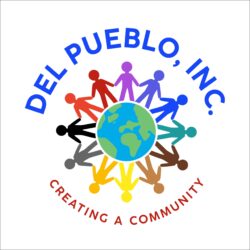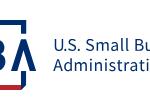COVID-19 – USDA Farmers Support Resources
The COVID-19 pandemic is causing financial distress across the country. Here are some resources that can help.
Growings On: Covid-19 Leads Many to Look Local for Their Food (Daily Citizen, 4/29) In recent decades, trends have seen continuous growth of food consumption away from home. While earlier generations commonly acquired food that was produced in home gardens or from local farmers, most food currently prepared and served at home is purchased at supermarkets. A small but growing movement emphasizes the appeal of “local food.” A comprehensive study of local food was a survey conducted by USDA’s Economic Research Service in 2015. Local food definitions are imprecise, but generally refer to a food or food product sold directly by a farmer to a customer, local restaurant/institution or a distributor operating locally.
Disaster Loans in Response to Coronavirus, Small Business Administration
The U.S. Small Business Administration is offering designated states and territories low-interest federal disaster loans for working capital to small businesses suffering substantial economic injury as a result of the Coronavirus (COVID-19). Note that eligible businesses include small agricultural cooperatives and producer cooperatives, but not agricultural enterprises. Economic Injury Disaster Loans offer up to $2 million in assistance. These loans may be used to pay fixed debts, payroll, accounts payable, and other bills. The interest rate is 3.75% for small businesses and 2.75% for nonprofits. A list of areas eligible for these disaster loans is available online.
Emergency Mini-Grants, Rural Advancement Foundation International-USA
RAFI-USA will be distributing emergency mini-grants of $500 to farmers who are drastically impacted by market sales disruptions caused by COVID-19. Funding is currently limited to farmers located in North Carolina.
Farmer Relief Fund, American Farmland Trust
AFT’s Farmer Relief Fund will award farmers with cash grants of up to $1,000 each to help them weather the current storm of market disruptions caused by the coronavirus crisis.
USDA Implements Immediate Measures to Help Rural Residents, Businesses and Communities Affected by COVID-19, USDA Rural Development
USDA Rural Development offers several opportunities for immediate relief under Rural Housing Service, Rural Utilities Service, and Rural Business-Cooperative Service. Some application deadlines are also being extended.
A Closer Look at Farmer Relief in Senate Pandemic Aid Package, National Sustainable Agriculture Coalition (NSAC)
NSAC breaks down how the senate aid package in response to the COVID-19 crisis provides relief to farmers and ranchers.
ATTRA has developed a list of COVID-19 resources that can help you understand the pandemic and how it affects your farming operation, and where you can find assistance.
A Better Way To Get Money To Low-Income Americans Through The Tax Code (Forbes, Marie Sapirie, 4/29) Shortly after Congress passed the Coronavirus Aid, Relief, and Economic Security (CARES) Act, a large group of lawmakers asked Treasury and the IRS to prioritize sending economic impact payments to low- and moderate-income Americans. That’s an important objective, and fortunately, there’s an easy way to target that group, should Congress decide to send a second round of checks in response to the economic downturn. The earned income tax credit is an appealing potential avenue for routing immediate assistance to taxpayers who are on the cusp of economic hardship, including job loss, missed bills, eviction, and food insecurity… In many ways, the recipients of the EITC are an ideal group for targeted aid during any economic downturn, and perhaps especially this one.
Realizing that we can no longer trust our food system, we may need to grow our own food. Here are some resources in Spanish.
https://espanol.ncat.org/
https://nifa.usda.gov/funding-opportunity/food-insecurity-nutrition-incentive-fini-grant-program
1. Five Ways Hunger Affects the Latino Community | DCentric
dcentric.wamu.org/2011/05/Five-ways-hunger-affects-the-latino-community
o
1. More than a quarter of Latinos struggle with hunger — compared to 14.6 percent of the general …
2. Latino children are more likely to go hungry than their peers. While one in four American children is …
3. Nearly 60 percent of Hispanic families with young children receive food from a program called …
4. A third of Latino kids use emergency food service programs. The 2010 Hunger in America study …
See full list on dcentric.wamu.org
Food and Nutrition Service
Food Aid Recipients Go Online to Amazon, Walmart to Avoid Virus (Bloomberg Law, Megan Boyanton, 4/29) Americans getting federal food aid during the coronavirus pandemic are flocking to a pilot program that lets them buy groceries online in more than a dozen states. The need for Supplemental Nutrition Assistance Program recipients to shop online has skyrocketed as they have been trying to maintain social distancing to avoid exposure to Covid-19 since the outbreak started spreading nationwide in January… The pilot lets SNAP households purchase groceries online at authorized retailers, including two giants, Walmart Inc. and Amazon.com Inc. Some orders may qualify for home delivery, but federal benefits don’t cover delivery and service fees… “FNS works aggressively with its state and federal partners to prevent fraud and hold recipients and retailers accountable when they don’t follow the rules,” Lipps said in a statement Tuesday. “USDA has prioritized program integrity throughout the entire online purchasing pilot.”
Details on Farmers to Families Food Box Program (Agri Clips & others, 4/28) Today, the U.S. Department of Agriculture (USDA) Agricultural Marketing Service (AMS), in conjunction with the Food and Nutrition Service (FNS) and the Office of Partnerships and Public Engagement (OPPE), published Frequently Asked Questions for nonprofit organizations seeking to receive food through the Farmers to Families Food Box Program. Read more about the Farmers to Families Food Box Program FAQs at the AMS website. On April 17, 2020, U.S. Secretary of Agriculture Sonny Perdue announced the Coronavirus Food Assistance Program (CFAP). As part of this announcement Secretary Perdue also created the Farmers to Families Food Box Program. Through this program USDA will partner with regional and local distributors, whose workforce has been significantly impacted by the closure of restaurants, hotels and other food service entities, to purchase up to $3 billion in fresh produce, dairy and meat products.






